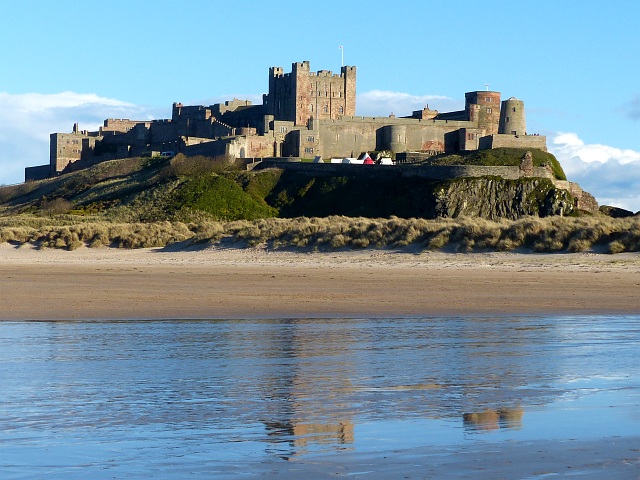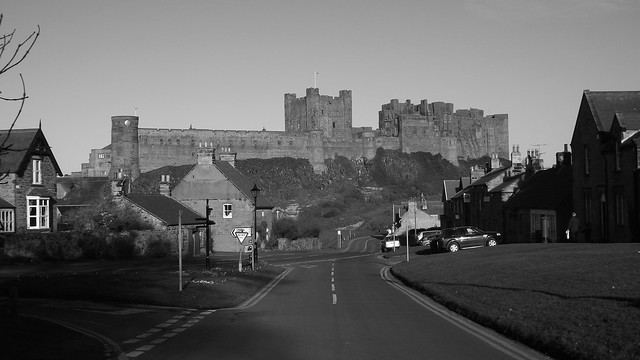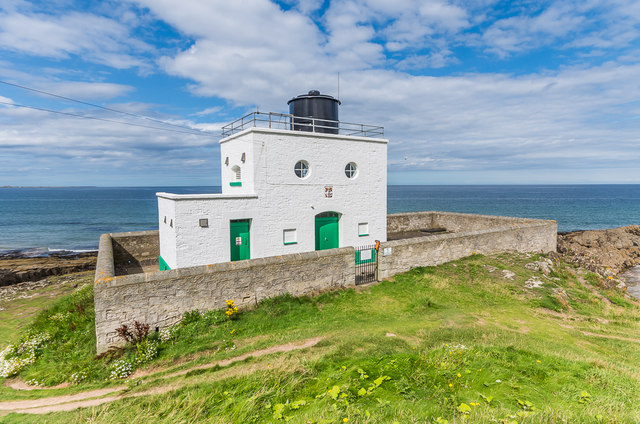Bamburgh Castle - March 2023. Northumberland's Stunning Coastline Part 1

-
Description
Bamburgh Castle is a castle on the northeast coast of England, by the village of Bamburgh in Northumberland. It is a Grade I listed building. The site was originally the location of a Celtic Brittonic fort known as Din Guarie and may have been the capital of the kingdom of Bernicia from its foundation in c. 420 to 547. In that latter year, it was captured by King Ida of Bernicia. After passing between the Britons and the Anglo-Saxons three times, the fort came under Anglo-Saxon control in 590. The fort was destroyed by Vikings in 993, and the Normans later built a new castle on the site, which forms the core of the present one. After a revolt in 1095 supported by the castle's owner, it became the property of the English monarch. In the 17th century, financial difficulties led to the castle deteriorating, but it was restored by various owners during the 18th and 19th centuries. It was finally bought by the Victorian era industrialist William Armstrong, who completed its restoration. The castle still belongs to the Armstrong family and is open to the public. Medieval history Built on top of a black crag of volcanic dolerite, and part of the Whin Sill, the location was previously home to a fort of the indigenous Celtic Britons known as Din Guarie. It may have been the capital of the kingdom of Bernicia, the realm of the Gododdin people, from the realm's foundation in c. 420 until 547, the year of the first written reference to the castle. In that year the citadel was captured by the Anglo-Saxon ruler Ida of Bernicia (Beornice) and became Ida's seat. The castle was briefly retaken by the Britons from his son Hussa during the war of 590 before being retaken later the same year.[6] In c. 600, Hussa's successor Æthelfrith passed it on to his wife Bebba, from whom the early name Bebbanburh was derived. Vikings destroyed the original fortification in 993. The Normans built a new castle on the site, which forms the core of the present one. William II unsuccessfully besieged it in 1095 during a revolt supported by its owner, Robert de Mowbray, Earl of Northumbria. After Robert was captured, his wife continued the defence until coerced to surrender by the king's threat to blind her husband. Bamburgh then became the property of the reigning English monarch. Henry II probably built the keep as it was complete by 1164. Following the Siege of Acre in 1191, and as a reward for his service, King Richard I appointed Sir John Forster the first Governor of Bamburgh Castle. Following the defeat of the Scots at the Battle of Neville's Cross in 1346, King David II was held prisoner at Bamburgh Castle. During the civil wars at the end of King John's reign, the castle was under the control of Philip of Oldcoates. In 1464 during the Wars of the Roses, it was subject to a nine-month siege by Richard Neville, 16th Earl of Warwick, the "Kingmaker", on behalf of the Yorkists which was marked by the extensive use of artillery. Location. About 9 miles (14 km) to the south on a point of coastal land is the ancient fortress of Dunstanburgh Castle and about 5 miles (8 km) to the north is Lindisfarne Castle on Holy Island. Inland about 16 miles (26 km) to the south is Alnwick Castle, the home of the Duke of Northumberland. Environmental factors Air quality levels at Bamburgh Castle are excellent due to the absence of industrial sources in the region. Sound levels near the north–south road passing by Bamburgh Castle are in the range of 59 to 63 dBA in the daytime (Northumberland Sound Mapping Study, Northumberland, England, June 2003). Nearby are breeding colonies of Arctic and common terns on the inner Farne Islands, and of Atlantic puffin, European shag and razorbill on Staple Island. Civil parish Bamburgh Castle was a civil parish, in 1951 the parish had a population of 18. Bamburgh Castle was formerly a township in Bambrough parish, from 1866 Bamburgh Castle was a civil parish in its own right until it was abolished on 1 April 1955 and merged with Bamburgh. Music is The Elders 1 by August Wilhelmsson and on Epidemic Sound. Editing is Done on Filmoa12 Drone by DJi -
Owner
Peace Drone -
Source
Youtube (Youtube) -
License
What does this mean? Unknown license check permission to reuse
-
Further information
Link: https://www.youtube.com/watch?v=kdoFQlnavYc
Resource type: Video
Last modified: 1 year, 7 months ago
Viewed: 286 times
Picture Taken: Unknown -
Co-Curate tags









